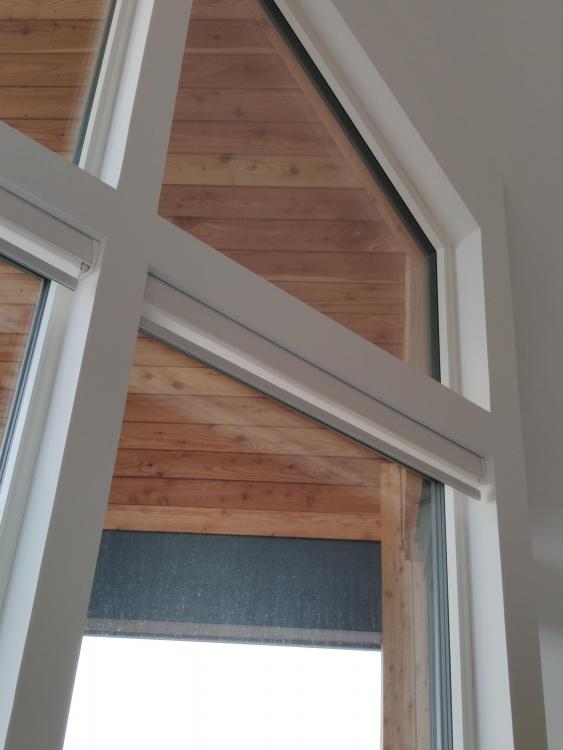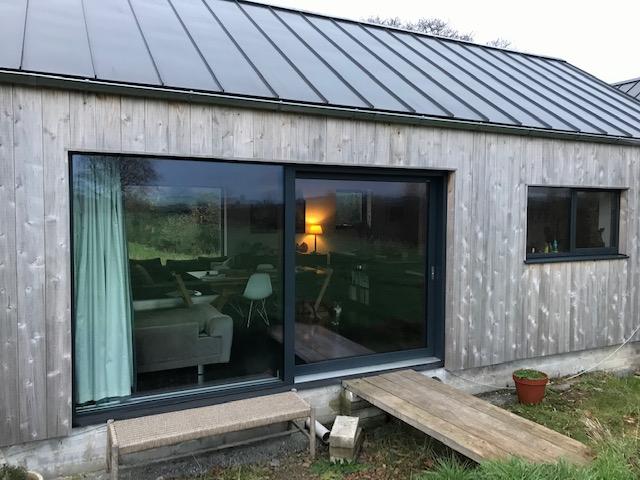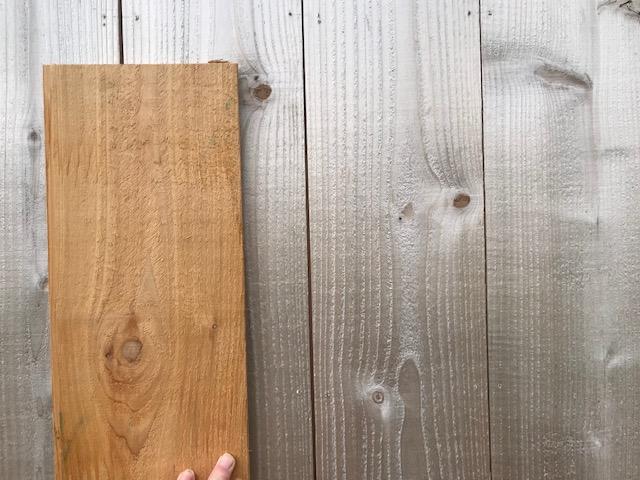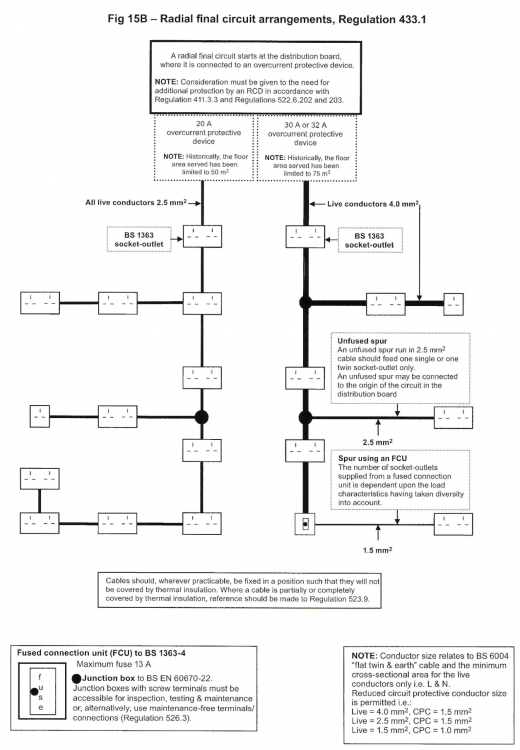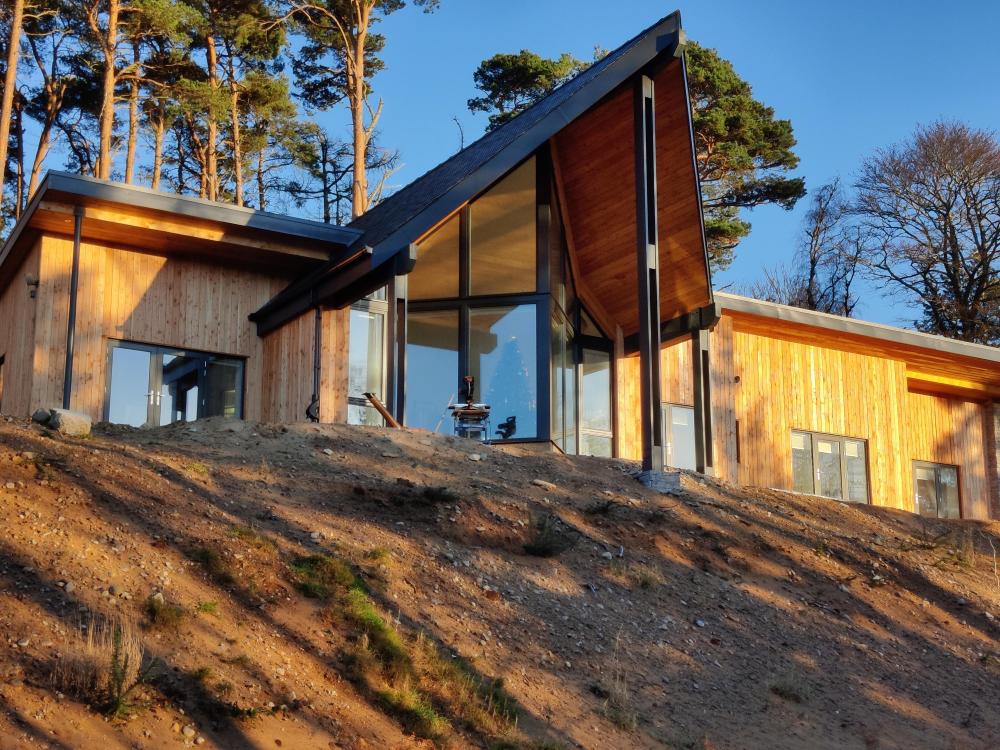Leaderboard
Popular Content
Showing content with the highest reputation on 02/28/22 in all areas
-
For me, I would not start another new build until I had ALL the money sat in the bank, including contingency. The trials and tribulations of the housing market were what almost derailed or build. Do NOT assume if you have an asset that you WILL be able to sell it, when you want to, for what it is worth.5 points
-
Why will it be painful? Intello over the PIR and the service void battens hold it in place.3 points
-
One of the issues with self building and professionals is that the cost of decent advice (and what should be taken) is above what people want to pay and it is usually a nice to have rather than seen as something essential. Primarily, your fixed engagement costs are higher on single property builds and sometimes you don’t get the basics (topo, CAD etc) so there are extra set up costs in dealing with bespoke designs. This drives clients to reduce the amount of time spent on actual design decisions or those sorts of things, and consequently you get less for your money and ultimately gaps are found. A good example of this is during any M&E design is the locations for sockets. Sockets however need ring mains or radial supplies; these need to be routed through structures and back to distribution boards. Modern structures may have steels in place, and subsequently these need to be drilled for cables. Drilled steels needs to be engineered for strength, and therefore the structural engineer needs to be aware so the fabricators create the correct openings. So when the client wanders on site and says to the electrician “but we want 3 more double sockets in that room” they are surprised at the additional cost of 3 sockets. When we used to advise clients on this, it could be that there is an additional zero added at design time to focus the mind - it’s £50 per additional socket when it’s being done on paper, and £500 when it’s being done on the ground for example ..! It is surprising the amount of people who don’t think about layouts and basically how they will use the house to define where things need to go. And professionals can’t do this for them as they won’t live there, so the fact you’ve got 3 table lamps you want in a room, or you will have a mirror next to the en-suite door to use a hair dryer is not communicated. Building professionals aren’t telepathic, and ultimately time is money so it is up to you where you spend any contingency or design costs as it will pay dividends when it comes to the build process but you need to start with the basics of your requirements as a client.3 points
-
This thread is good company: and maybe one we should encourage new self-builders to read before starting their project(s).3 points
-
I've just handed in the notice on our flat, years after we thought we would be out of it. Weirdly the last 3 months have been the best despite everything. The bulider went bust so we've been finishing things off ourselves and putting right a lot of his crap. We are going to end up with a better house than we would have had he still be on the job. I should have binned him a long time ago.3 points
-
I’ve been a carpenter/builder my whole life and this has been hard, living in a caravan has been hell. It’s demoralising to wake up, Graft all day, then go back to the caravan without leaving site for days on end. Still- I’m ploughing through it. would I do it again? Not a chance! I won’t go back to building because simply I can’t be arsed with all the paperwork and stress- and I’m not fussed about making money. what I wouldn’t mind is building other peoples ‘self builds’- Labour only and site management. The passiv side of it has been fascinating.3 points
-
We feel very fortunate that we have lived adjacent to our site for forty years. We, therefore, knew people who knew people and we could, mostly, book trades by reputation. For instance our amazing brickie was working opposite us on a large self build for a well respected civil engineer. The brickie is a one man band, close to retirement, who picks and chooses his work. He actually approached us because he said he would only work on bungalows now. Unfortunately he had an allegiance to the civil engineer neighbour so we did lose him every now and then but we never regretted handing him the plans Same with many of the other trades they all came recommended by the trade on site at the time. We, of course, always went out to quotes but if there was not much in it opted for the recommendation from our trusted on site tradesman. The Civil Engineer over the road installed the sewer system which needed a pumping station. But we trusted that he was right and that he would do a good job. The only one that went wrong was - yes you guessed it - the windows! They were a local carpentry company that were passionate about their work but still managed to muck up all the measurements! They provided us with formers, to the brickies delight, but the windows that followed were different to the formers! Nightmare It all turned out all right in the end and they did not request our final instalment Would we do it again? Never! The worst bit - living in a caravan on site. We stayed on a local campsite for a while and that was much better. You felt that you had left "work" and "come home". That would apply, I think, if you sited your caravan on a friend's driveway perhaps too? It is the - never leaving the site - that takes its toll. The trouble was that the campsite charged £20 per night and the muddy site was free...... Another tip for newbies reading this. When the plans get changed as they surely will - throw away the old ones!!!2 points
-
That answers your question do you want to play with the big boys or dither around like a wally if you don’t buy it somebody else will, if you have the funds get it bought get it knocked down and build the million dollar house the site needs.2 points
-
@PeterW couldn't agree more, of course there are some rogues out there BUT I think an awful lot of people engaging these trades don't fully understand the various remits and can't effectively self manage a build as they don't know what they don't know and when it ends up in the shitter it's very easy to blame the tradesman that's looking for the extra money / time. I have come across more and more subbies that simply won't price private houses now as its just not worth the hassle regardless of the money in it2 points
-
And anywhere. Too many are only knowledgeable in a very small sphere...eg structure but not cost, aesthetics but not structure, New starts, read up on here so that you know a bit about everything.2 points
-
It's a known predicament of human nature sadly. Lao Tzu said over 2000 years ago that you should always prepare for a journey to be much harder than you imagine. I wonder if he'd built his own house. Isn't that just the case. You get to the point where you just have to carry on. However, on the bright side, it is a major achievement to build your own home, just like it's a major achievement to start a successful business, be a successful athlete, or achieve anything of note really. All of those things take their toll and demand some hardship, it's just the flavour of the hardship. I myself am far less stressed about the building game and running out of money, being delayed and seeing my boys growing up in a caravan than I used to be when working at a senior level in a large company, having to deal with all the associated BS and living subject to the whims of the firm, so to speak. Definitely no regrets here for me.2 points
-
I would have thought the basics are 1. Simple manifold so you can flow balance, actuator of each loop, all wired to act as one, from single thermostat. A simple UFH wiring centre, that would manage the thermostat, actuators and pump, possibly a relay to manage the heater, using the wiring center CH signal. 2. Single simple thermostat, I'm using a Salus wq610rf, set to 0.25 hysteresis. £60. You can move it around the house to find the best location, before committing to holes in wall. 3. A mixing valve upstream of pump, to give you protection if the thermostat in the Willis heater fails. 4. Pre installed (spare) second heater, valved to be put online should the first unit fail.2 points
-
Welcome to THE forum for people like us! What a deliciously simple setup you have installed and it sounds like the house overall works well. The amount of pipe in slab is quite low, some may say too low but the proof may be in some of the other things you tell us, but again that seems to be working if you can get the temperature up as you describe so all you need now is to get control of it. 1. It does not sound like you need a manifold but, see 4 below, you probably need to check the floor temperatures across the two zones to check they are even. 2. One stat will be fine, NEST is a good system but naturally it comes with the Big TECH downsides of privacy etc. You may need to control the water temperature at the Willis so you don't end up with the water temperature running away. This will control the air temperature - however you may also want / need to control the water temperature / slab temperature. 3. Cannot see a massive need for run on, what would that do or not do once the heat is off nothing will get any warmer. 4. Several things. A. The slab is at the water temperature (I think JS Harris had his at about 23) if that is even then all is well, sort of, you have the Willis water temp stat controlling the slab. B. The water is all flowing round the shortest loop and as it is so short it does not have the contact time to give up its heat to the slab - hence check the slab temps but you may improve things by playing with the pump speed. C. This may then lead to the need for a manifold to balance the two loops. All need you to find out how close the actual slab temperature is to the water temperature you are putting in and how the two zones are balanced (Some balancing might be achieved using the ball valves you have although this would be relatively crude.2 points
-
Well our builder was a crook and we lost a lot of money. Happened just at first lockdown. Luckily enough that meant working from home for 18months so de camped to the site and built it myself and skived work as much as possible. Doing video calls whilst in a building with no roof in the rain.... Said wifi was too slow so did voice only lol. 2years on and next week we are getting BC in for final sign off. Looking back, I now know the original quote was miles too low, if we had paid a proper builder it would have cost a lot more than we have spent even allowing for the money we lost from the original crook. Oh and we were renting locally, they decided to sell and wanted it empty so we moved into the house in Oct 2020 with no heating, no internal walls, no plasterboard, temp stairs, temp electrics and a site toilet.... Didn't even have any cladding on the outside, so it looked like a giant purple quality street with the vapour wrap on. That was a Grim winter huddled around a couple of electric radiators. But, and for us this was critical, we never fell out of love with the site. 2 acres of woodland, our house in the middle and a 10 min walk to the centre of looe and the beach. Oh, and access is via a very narrow and steep road, I can just, and I mean just, squeeze my Toyota hilux onto site. So everything had to be brought in on that. I will never forget putting in 240 sheets of 18mm OSB on my own. And plasterboard, my god the fireproof stuff is heavy for 1 person. 140mm woodfibre external insulation, also bloody heavy. Never had any scaffolding on site, as I was on my own I worked of a decorators platform, dodgy as hell but never fell off! Never had any skips, cant get em on site lol. And as of last week told work I am taking early retirement at the end of this year. I can afford it, just. Retiring poor, but just affordable. Going to enjoy the building and location this summer for the first time, all worth it! I can certainly say, without this site I wouldnt have known half the stuff I do now and sharing pain is great ?2 points
-
2 points
-
it will make sure you are air tight if you tape the joints and tape it to the ceiling air tight layer, ever fixed a puncture in a bike inner tube, the tiniest almost not visible hole and the tube deflates. So think how many of those size holes are in the PIR joints and gaps. Also prevents moisture laden air reaches cold parts of the wall construction and potentially condensating. It is fiddly but I would say well worth the time and effort if done neatly. Energy costs are only going to go one way, worth spending time and effort now to reduce long term costs.1 point
-
Any vapour between the Intello and the PIR can come back into the building as Intello is designed to be humidity variable so if its its damper on the PIR side than in the room the vapour comes back seasonally. Good info and video here: https://proclima.com/products/internal-sealing/intello/how-it-works#sub_navigation1 point
-
What’s wrong with 5A lamp sockets? We have about 5 of them and I’m excited to use them when this nightmare eventually ends.1 point
-
Interesting sub topic. The only time steels have been an issue is on one build where a major steel was drilled backwards and nobody noticed until me and the plumber arrived on the job. Half the drilled holes were in the wrong place and useless. We had to make do with half the holes we had been expecting which made for some very full holes and longer cable and pipe runs. Of course if there was a main contractor we could have thrown the problem back to him to correct the drillings, but there was not, self managed by the owner, so the owner agreed to the longer runs and very full drillings. On the subject of where to put switches and sockets. I normally spend the first morning going round with the owner marking the socket and switch positions on the walls and agreeing them with them. I don't get fixated with only fitting what the drawing shows because almost always it is wrong.1 point
-
Yes, an UVC keeps all the DHW At 47-70 approx. Any water expansion is taken care of by an expansion vessel and over pressure cases by temp and pressure release valves. It requires a qualified person to install and inspect it annually. (although many don't bother). There is a worst case situation where all safety devices fail and it explodes. You can draw almost all of the stored water inside off as useful hot water as the cold water in the bottom won't really mix with the hot water being drawn off. A thermal store is a large tank full of water that will never see the light of day. It is heated by your heat source directly in most cases. A DHW coil passes through the tank which absorbs energy into the DHW so it emerges hot, cooling the large body of water in the process. No safety or over temo devices required. Worst case is with a huge boiler you could end up boiling the store and it would vent as steam. Not terribly realistic. No issues with DIY install or maintenace. Disadvantage is that you need to store either a lot more water or water at a very high temperature as once the temp of the store drops near to 40 deg it can't supply hot water any more. A thermal store at 45 deg will have almost no DHW capacity. An UVC will have lots. With a Thermal store you can run UFH heating directly from the main water body in the tank. The short answer is put in UFH and a large (300l minimum)UVC and an ASHP so long as it's not huge money (<£6k). Its the soundest advice I can come up with.1 point
-
You own the survey and it is confidential and you should keep it that way unless it acts as a lever to reduce the price. If the sellers get wind that it's all OK, they may change their mind on price or purchaser.1 point
-
1 point
-
It should do. How else do they fuse ring and lighting etc The static caravan my son had had electric heating which was also fused. Our turing caravan had its own CU as thay all do unless its 50 years old. Given your level of knowledge I would suggest you get a local spark involved. Remember some that have done nothing but house bashing may never have touched three phase.1 point
-
+1 to the plume kit although I would want to see where it’s installed and how the vent has been done first.1 point
-
Think you need a plume kit. https://www.screwfix.com/p/worcester-bosch-plume-management-kit/90277?tc=TA5&ds_kid=92700055281954502&ds_rl=1249404&gclid=CjwKCAiAgvKQBhBbEiwAaPQw3KCC9yBmYfLy6tsbGO7b6w2iKD9sluZDsnUZtVRKX-k3gFFPMnDiMRoCeYcQAvD_BwE&gclsrc=aw.ds1 point
-
I’m not talking your large scale devs - even your spec builders (so less than 5 houses a year) are seeing price decreases now. Blocks are coming down on 1st April from one merchant I know, others will follow.1 point
-
1 point
-
Not required and a waste of money OK so this is your real reason…!! Time to blend the materials here to get to your target and reduce costs, but I would think carefully about PIR here as you will need 230mm fixings through both battens and into the joist behind. That will take a lot of skill, and a fair chunk of cash to do properly. I would be getting creative here and creating a ceiling off the main rafters using 3x2 and OSB gussets so that the 3x2 is level with the bottom of the purlins. I’m guessing this would give 300mm of airspace below the roof, so it would then be full fill with Frametherm 35, and then a stapled VCL to hold all that in. Then add a 62.5mm plasterboard / insulation layer over the lot and you have a very good thermal and acoustic performing roof for probably 2/3rd of the price of the thick PIR and fixings etc.1 point
-
Interesting, we had the opposite experience - I loved being on site every day (working day job from the caravan) as could keep an eye on things and trades were able to get hold of me (as PM) for any questions. The only mess ups happened during the odd times I was away from site for a few days or more. Easy to buzz round first thing and when they had all gone to tidy up etc.1 point
-
1 point
-
Sorry @Zak S but you are going about this in a very odd way. 1. The subsidence has clearly been there for some time, so it is not something that can be claimed on insurance as it is pre existing. 2. The problem was very clearly there when you bid on the property. If you start acting like the cost of fixing it is a problem now, the seller is not going to be impressed. Unless your original offer was subject to fixing it, then they will just put it back up for sale, or sell it to the second bidder. You are wasting money on the surveyor unless it is needed to back out of the deal. You already seem to have a report that says that the ground is too soft to build on without piles. 3. The idea of buying it at the agreed price and then them paying to have it fixed is very strange. It has all kinds of issues. You would be paying too much SDLT, they could end up having to pay inheritance tax on it and the lender is unlikely to be impressed. Over-riding all of this is that you know that the ground has issues. It would be a very bad idea to pay a high price for the house and then refurbish it. You could have more issues down the line. Knocking it down and properly rebuilding it seems like by far the best option, so you should run the numbers based on that. If that means pulling out, then so be it. It is hard to say what state the property market is in, I would have said prices had increased since last summer ex recent issues. The thing I would be more concerned about is that building costs have continued to increase. If most people are looking at this as a development opportunity then that is likely to have the most impact on the value.1 point
-
My boards are 143 on the cladding 93 for soffit.1 point
-
Yup, I've had to pay everyone on a day rate which is scary, but I trust the people involved (more or less!!).1 point
-
If you add the TMV and pump set with the manifold, remember it needs to be a low temp setup. The Ivar Link has the thermo probe + TRV instead of a thermo-mechanical mixing valve. Select the option for 20-60oC temp range on the TRV and that will give you very accurate flow temp control all the way down to its lowed street setting. Also, I set these up to have the primary pump recirculating water directly back to the Willis heaters to keep a constant flow of water and to reduce kettling. From the recirculating loop, you then tee off twice, once for UFH manifold / pump set flow ( immediately after the Willis heater(s)) , and the UFH return gets teed back into that loop immediately before the return goes back into the primary pump. I wouldn’t set the Willis up with the flow arrested by a TMV.1 point
-
1 point
-
If the surveyor tells you there is subsidence , and that means you will pull out, then you don't need a written report. That can halve the fee, as it saves time and there is minimal legal liability.1 point
-
Lots of discussions on space heating but you really need to consider overheating as thoroughly. Our passive standard house is in SE England and the single UFH zone on the GF comes on for maybe a handful of weeks each year. We have electric under tile heating in bathrooms (for comfort) and wet towel rads. No heating in basement and nothing aside from the afore mentioned bathrooms in first floor and rooms in roof. House is always comfortably warm in winter - frequently get a shock when we wander outside in a t-shirt. Everything that generates heat (people, appliances, pets, solar gain) will contribute to your requirement. MVHR will prevent internal heat being wasted via ventilation but is not an effective provider of heat per see as the air volume moved is quite low. Spring, summer & autumn are the challenge, once any unwanted heat gets in it is very hard to shift and low sun in spring and autumn can be very effective at heating the house unintentionally. Xmas day was warm this year, having guests and the ovens on made it necessary to open the sliders We face east (street) & west (garden) with gables to north & south (so minimal glazing there). We have external motorised Venetian style blinds to all east windows and recently added internal motorised blinds (from Ikea) to the big sliders on the west. West bedrooms have balconies so are a bit stepped in from evening sun and have normal curtains. All velux on east and south have external motorised shutters, west velux have internal blinds. Effective use of the blinds is key to keeping house comfortable in summer, we do stack ventilation in evening /overnight (opening atrium velux and opening & locking a slider a crack) which is very effective also. PHPP was done by a project manager early in project - as well as giving peace of mind wrt space heating it flagged the overheating risk. Some here have a passive GF slab (i.e. insulated underneath) with UFH pipes cast in and use their ASHP in cooling mode in summer, keeping slab just above dew point. I regret not putting in provision for split air con as with the roof PV would have been a free cooling solution for summer.1 point
-
My experience with boards: Keep the lengths down, perhaps requiring occasional vertical break features. Otherwise the twists in the boards cause a problem with laps (the highest bit of the lower board and the lowest bit of the upper board dictate the spacing, so it is worse with long boards. Get it on site early in case it has some severe shrinking to do. Colours: whatever you pay, they all fade to grey, unless you use the wrong fixings in which case there are nasty stains, esp with cedar. A timber merchant showed me a trade document on red cedar, which stated that red cedar was only weather and pest resistant in colder climes. Britain is too damp and it doesn't get to dry out. He sold lots but never promised it was a good idea. My choice (agreed with clients) has always been to use standard softwood, pre-treated as tanalised or protimised. Left to shrink and twist for the summer, then stained which keeps the same colour for many years, depending on colour and exposure. If stained too early, any shrinkage will show strips of un-stained. A merchant will give or lend you some sections to take home and hold up to the wall. lapping a few together is important to see the effect and coverage.1 point
-
Remember the caravan should be on a local TT earth, not any DNO provided PME earth. Your electrician should know this.1 point
-
@Thorfun I think the width depends on the area tobe covered. It might be a good contrast to your Larch boards to have a different width. I fitted locally sourced WRC, knotty compared to imported and about 195mm width. All 200sqm from the same forest in South Devon so does provide real consistency with the boards. The imported timber does vary considerably in colour which I wanted to avoid. My shed below. It has gone silver within in a year. @Russell griffiths Not seen it near completion. Looks great. @JohnMo Another stunning home. @ToughButterCup Swam in the River Dart this morning, 4'C. Sends me to sleep afterwards.1 point
-
1 point
-
They won't install anything you need your electrician to get the rcbo, earth, meter tails etc. They'll have a spec document somewhere in your connection agreement. For the caravan, 16a commando sockets are perfect.1 point
-
1 point
-
I'd agree with that approach and followed it. We had full budget plus a little over 20% contingency. What we didn't know beforehand was how badly advised we'd been by the professionals we'd engaged to help with the project. As a consequence our project ended up almost double in size. Then we were hit by various global crises that saw our budget shrink even more and so everything was far more expensive than originally priced. And believe me, I'd nailed down the prices before even commencing with the work. This is what has led me to believe that you have to beware professionals in the construction industry, as I've generally found the service we've had to be particularly below par. I don't seem to be the only one that's had this problem either.1 point
-
There WILL be caravan dealers somewhere near you that sell used static caravans and self builders will be a large part of their market particularly for older ones. And they usually have the vehicles to transport them or have a connection to a company that does. £5K should get you something decent, you can get them for a lot less than that even, only you can decide what age / condition you want and how much you are prepared to pay for it. Sell it at the end of the build, or do as we did, plan from the start for it to remain as a big garden building, much cheaper than it would have cost to build a shed that size, and it did us 18 months of accommodation first.1 point
-
And there lies a potential problem. That is a big opening. When the wind blows on the glass the frame around about need to resist the loads. The central pane of glass is vertically spanning. The bottom rail prevents it from moving in and out. At the top there is a gap and the fixings are subject to a lot more bending force. For fixings to realise thieir full capacity they also develop a "second order" tension effect. They can't develop the tension as the compriband compresses and the frame at the top will bend upwards / twist under wind loading. One thing that stops the movement and saves the glazing companies is that the plaster board, masonry check outside / or the mastic lasts just long enough to make it very difficult for the home owner to complain. Bifold doors can be even worse as when they are open they rely on the top part of the frame to stay rigid, it does not have to be windy to cause a problem. It's a dilemma once you start to delve into it!1 point
-
You've not been to the Gorbals pool 10 years ago at the height of eastern European immigration. The culture of posing (model style) for pics by Polish/Lithuanian young woman in swimsuits was new to the southsiders of Glasgow.1 point
-
Ask them for the spec on the gates and ask if they do a battery backup version. I’ve seen this before and you basically run a 1A battery charger on the gates (or even solar) and then use the batteries for the grunt as they only need the power to open and close. Lots of farm gates have similar setups due to exactly this reason.1 point
-
No this will get complicated. There are rules about building for family and who claims what, and that’s assuming these are new build not conversions or restoration unless they have been unoccupied for a number of years. Need to get this right from the outset as it could cost you ££££1 point
-
Same as above. No cooker hood yet, mainly because we have not yet seen an island cooker hood that we like yet. The cable and fixing points are there for it. Our kitchen is part of the largest ground floor room, what is often called a "family room" by some people. So it has an MVHR inlet an one end and an mvhr extract at the kitchen end. I have just this weekend got around to balancing the mvhr system and made sure the inlet and outlet rates for that room are balanced. Like others cooking smells don't seem to spread, and I continue to delight in the good air quality throughout the whole house. Until you have lived in a house with mvhr, it is hard to understand just how well it works at keeping the house air nice and fresh.1 point















